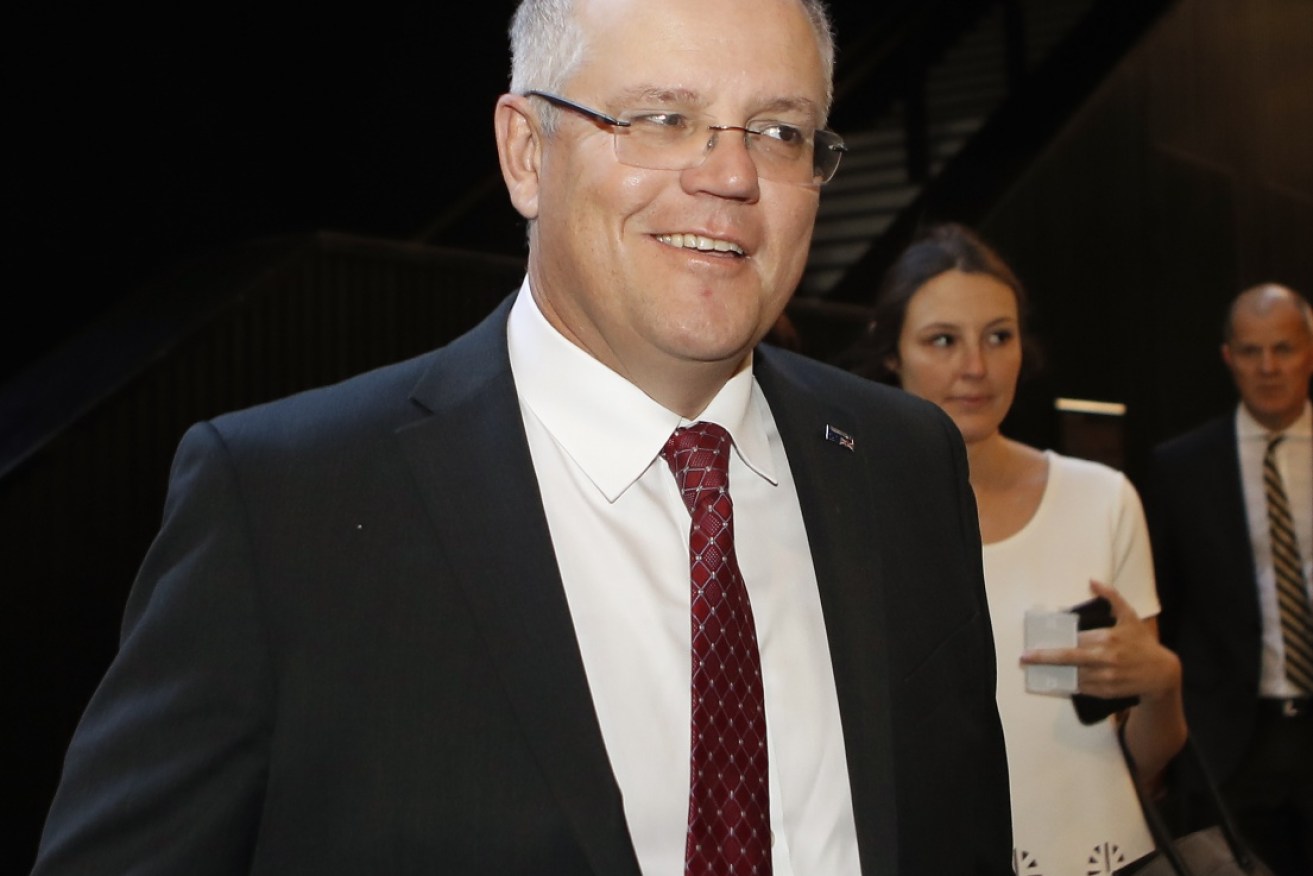Budget 2018: Scott Morrison believes in magic numbers


Treasurer Scott Morrison has declared 23.9 to be his magic number. Photo: AAP
Would you consider astrology a sound basis for formulating the federal budget? I wouldn’t. Ditto numerology – the belief “in a divine or mystical relationship between a number and one or more coinciding events”.
Yet, as crazy as it seems, that is what Treasurer Scott Morrison is doing and has pledged to continue to do if he has the chance. Can tea leaves and chemtrails be far away?
Mr Morrison has declared 23.9 to be his magic number, the One Figure to Rule Them All, the core basis of Tuesday night’s Budget to set the parameters of the nation we can be.
And he’s not alone in the 23.9 cult – Finance Minister Mathias Cormann is a signed-up member as well. All hail 23.9!
I thought everyone knew the correct answer was 42.
For rational non-believers in numerology, 23.9 is just another random arithmetical value in an infinite universe of them. In the mythology of the Liberal Party though, it is a number made sacred because it was created by the Divine John Howard, He Who Could Do No Wrong.
Thus the cult members believe it would be a mortal sin if the Commonwealth Government’s tax take was more than 23.9 per cent of gross national product.
Yes, that sounds like sheer lunacy, because it is. But it’s exactly what the government is pledging to do – base the Australian economy for the next four years on federal tax being no more than 23.9 per cent of GDP.
“We have a speed limit on taxes which we stick to – 23.9 per cent,” Treasurer Morrison said on Monday. “That is as high as we believe taxes should be as a share of the economy and we will be sticking to that plan.”
There is absolutely no rational basis for selecting 23.9 as the tax cap. There is no economic textbook that stipulates it, no example of it being a prerequisite for national success, no IMF or ratings agency guideline recommending it. There is zero argument for 23.9 necessarily being better than 22 or 42, depending on what else is going on in the economy and what sort of economy we want to have.
The University of Melbourne’s Professor John Freebairn destroyed the 23.9 nonsense before last year’s Budget.
“At best, this is an arbitrary cap. More importantly, it distracts from real tax reform, which could increase national productivity and income,” he wrote.
“Using the latest numbers compiled by the OECD, we find that tax as a share of GDP when you include all levels of government is just 27.8 per cent in Australia. This compares to an average of 34.2 per cent across all OECD countries. Several European countries have a share above 40 per cent, although both the US and Switzerland are relatively rich countries with lower tax as a share of GDP than Australia.
The diversity of tax to GDP ratios across countries indicates the design and operation of taxation and government expenditure programs are more important than the tax share.”
Ah, but genuine tax reform takes bravery and political capital – both in short supply. Merely proposing company and personal income tax cuts is not reform.
So why 23.9? Peter Martin has supplied the answer:
“The number has a mythic significance. Not mentioned in the Fiscal Strategy, it is said to be the tax-to-GDP ratio the Howard government bequeathed to the Rudd government (although subsequent revisions have moved it down to 23.8 per cent).”
So it was the very random outcome of a moment in time, the wash-up of a resources boom economy, a figure with no special meaning for anyone but members of the cult.
It has even less worth than another magic number the government holds dear, 25. That’s what ScoMo and his Treasury secretary John Fraser have said should be the limit for federal government spending as a percentage of GDP.
Again, it’s rather meaningless. The government has tried to link 25 to maintaining our membership of the exclusive club of nations that have AAA credit ratings from the three American ratings agencies. Such a link is only possible if the 23.9 cult rules.
The reality is that, on the most conservative measurement, only two of the 11 nations in the club score substantially lower government spending as a percentage of GDP as Australia. One is within a couple of percentage points of Australia and the rest are considerably higher, some much higher.
Both 25 and 23.9 are random rules of thumb without inherent merit. They are examples of the danger of letting such rules take up residence in the popular mind without being examined as fit for purpose.
As Professor Freebairn has suggested, they are distractions from working out what our rates of tax and spending should be.
For that matter, any rule of thumb based on a percentage of GDP is inherently suspect as GDP itself can and does move around for a variety of reasons. But that’s another story.








